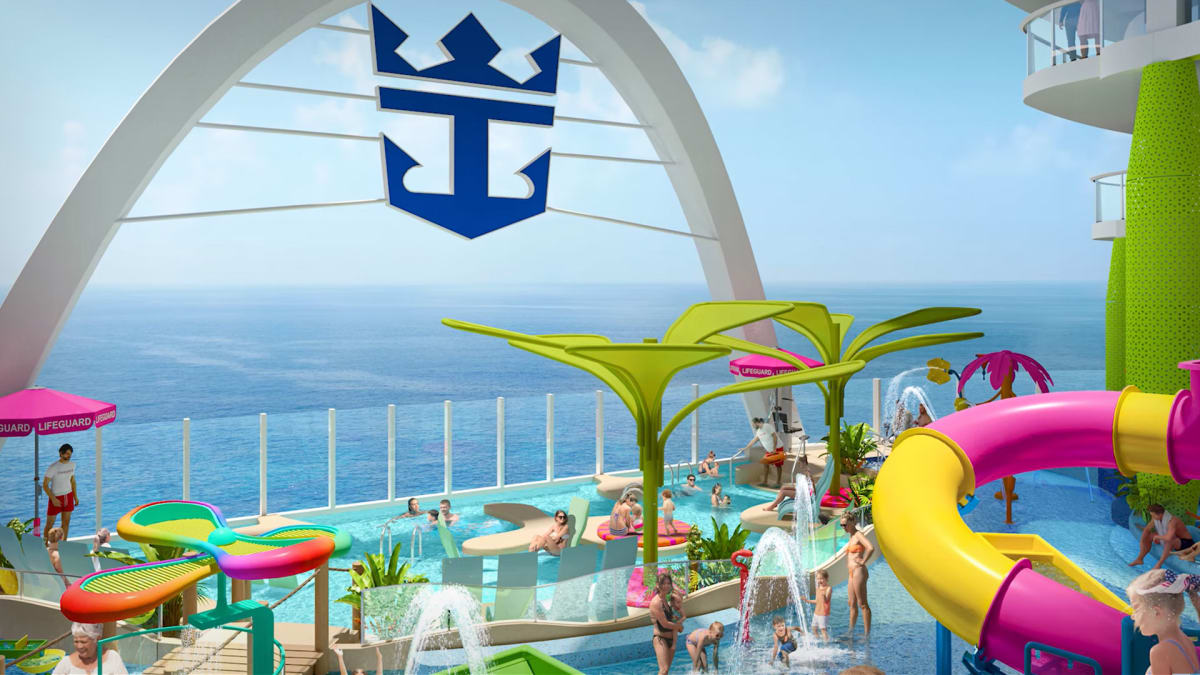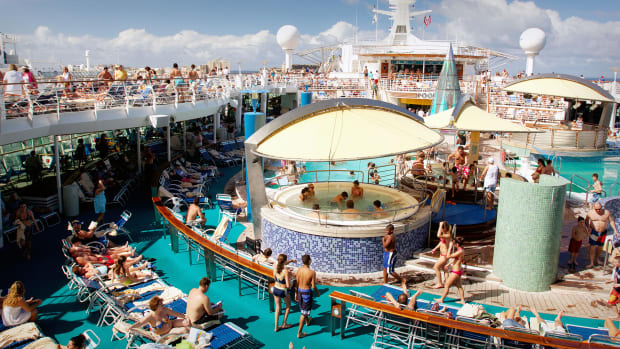
When the cruise industry returned to the U.S. after it was shut down from March 2020 to July 2021, the comeback was tentative.
Capacities were limited and the Centers for Disease Control and Prevention put in place all sort of rules to enable Royal Caribbean (RCL), Carnival Cruise Line (CCL), Norwegian Cruise Line (NCLH), and others to get back to sea.
Despite the low capacity, prices were generally lower than normal because the strict rules and vaccination requirements limited the potential audience.
Some potential passengers weren't vaccinated, others thought that having to wear a mask in some places made their vacation less fun, and others didn't like having to test before boarding. Those factors -- as well as older customers simply broadly avoiding travel due to covid -- largely kept cruise prices below historical norms since the return.
There were exceptions as new ships including Royal Caribbean's Wonder of the Seas and Carnival's Mardi Gras have commanded premium pricing, but overall cruise fares have remained depressed.
Now, with capacity back to normal and the industry having dropped nearly all covid-related rules, the challenge is building back to normal pricing, That's something Royal Caribbean President Michael Bayley expects to happen, but it won't necessarily happen quickly or easily.

Image source: Dukas/Universal Images Group via Getty Images
Royal Caribbean, Cruise Industry Faced a Unique Problem
The modern travel industry has never faced anything vaguely like the covid pandemic. RCL has dealt with the specter of onboard illness -- that's something every cruise line vigilantly guards against -- but a global pandemic that shut the industry for more than a year was unprecedented.
Part of the industry's pricing problem comes down to timing, according to Bayley.
"It's a genuinely unique dynamic, I think, the return of the cruise industry. As a rule of thumb, to fill one ship all year round through essentially resequencing, [it takes about] one year and a little bit selling one or two load factor points a week, for 52 weeks, and you'll fill that ship," Bayley told TheStreet. "And no matter how clever you think you are, and that's kind of how it works, it takes about a year to fill each ship."
Royal Caribbean did continue to sell cruises during the pandemic, but sales were hampered greatly because customers did not want to commit money to sailings that might not happen.
Bayley pointed out that the entire industry began coming back only in July of last year, about 16 months ago.
"And you've got suddenly 263, or whatever the number is, a massive number of these huge cruise ships suddenly open for business," he said.
"And each brand has its own dynamic. ... But the big brands that have a big database, a big following, a big loyalty, ... we kind of came back pretty much in good shape."
"Good shape" is relative, however, because of the unique place the industry was in. That, along with other factors, has led to lower prices.
"But all of us were coming from very low load factors. And we were trying to get to our model number of 100% plus. And so, yeah, pricing was a challenge during that period," he said.
Royal Caribbean Sees Higher Prices Ahead
"I am more optimistic about pricing now than I'd been before. I think we've seen ourselves, our load factors are back, our bookings are solid, and our pricing is recovering," Bayley shared.
And, it should be noted that during this period of broadly lower basic fares, Royal Caribbean saw onboard spending increase, something Carnival executives have noted as well.
"During this period, even though ticket was lower, onboard was significantly higher. [So] net revenue yield was up. [Business] was good, and I think we were comfortable with that," he said.
The restart, Bayley noted, came with a number of challenges that were unprecedented, but they were industrywide, not unique to Royal Caribbean.
"When we all restarted, there were issues bubbling around us: supply chain, inflation, crewing, [airfares], you name it," Bayley said. "And by the way, all of the cruise companies had a huge amount of ... Future Cruise credits or whatever each company calls them."
Future Cruise Credits, to use the Royal Caribbean term, were credits issued to customers for cruises that were canceled during the pandemic. That allowed the cruise lines not to have to return some cash, but it also gave customers a lot of future buying power that would not require them to lay out cash (although that likely contributed to higher onboard spending).
Bayley, however, sees the worst days as behind.
"It's a little bit like being knocked in the mud, and everybody standing up, and then we slip a little bit, but you kind of get yourself back on your feet. And then you know, you've slipped a little bit," he said.
"But now we're in this position where we're all ... looking pretty clean and back on our feet and everything started to normalize, stabilized, and get better and better."
Normal, of course, would mean a return to 2019 pricing, something that has happened only on select cruises on newer ships or during holiday periods.
The longtime Royal Caribbean executive is, however, confident and pleased about where his company sits now.
"And I think for us at Royal, we're pretty pleased, well, actually, we're very pleased with how Royal's come back. And as each week and month passes, I think we feel sturdier, more confident, and happier about where we are," he added.







